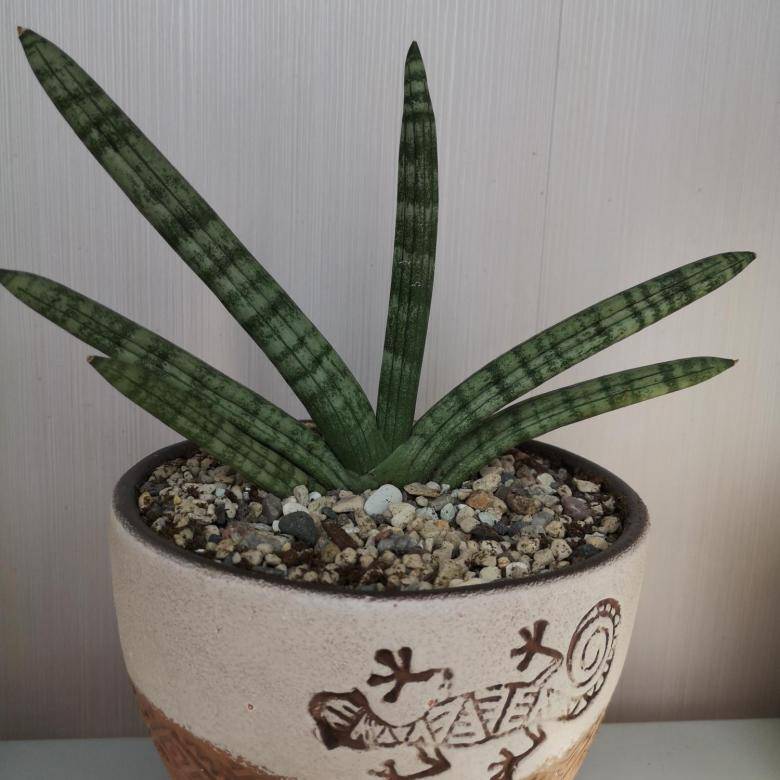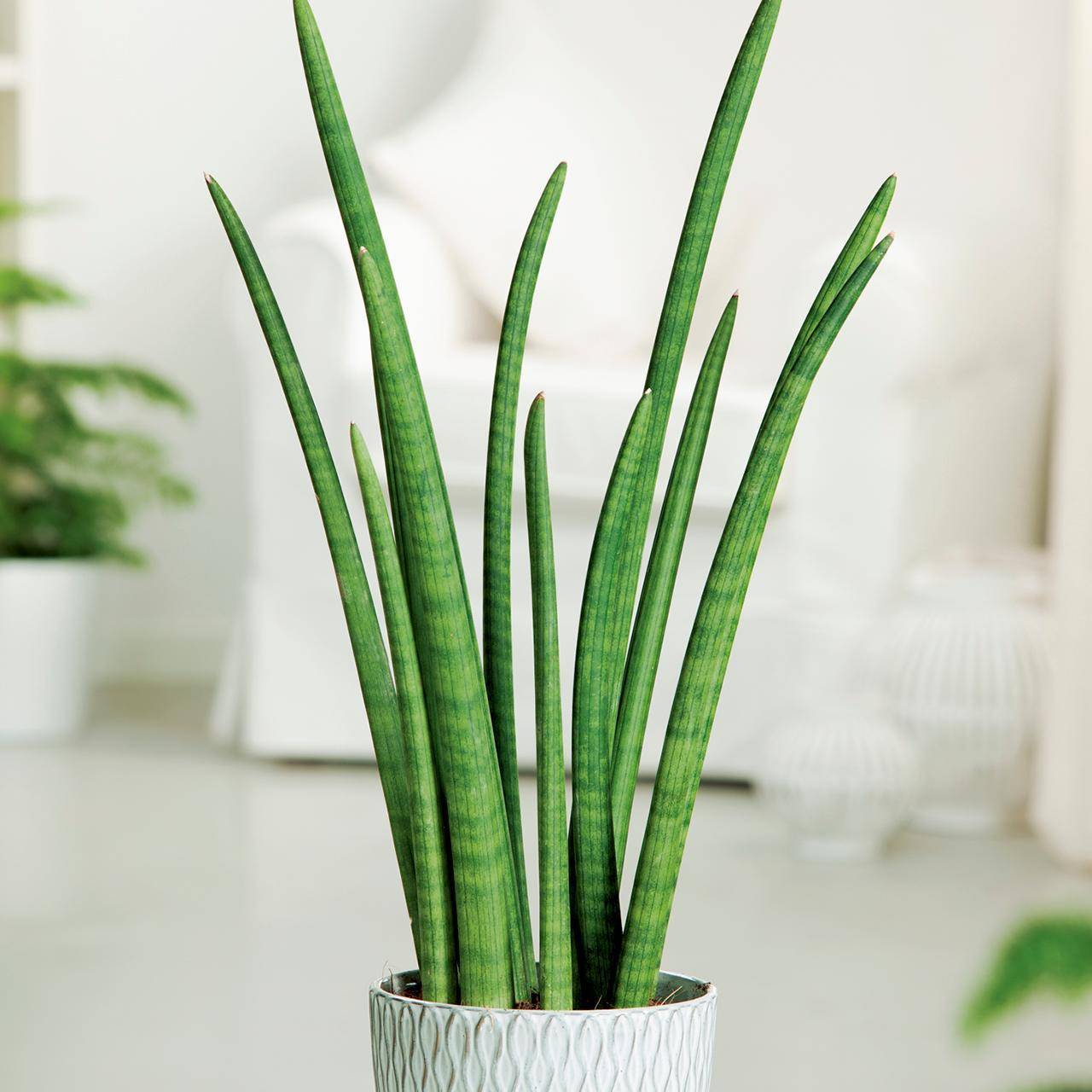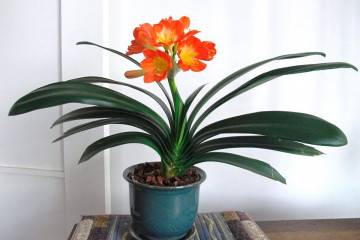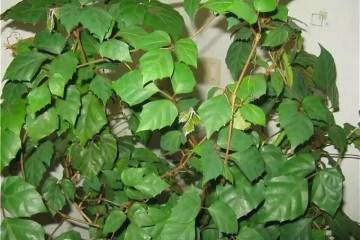Sansevieria cylindrical - home care
Content:
Plants of the Sansevieria genus are often found in modern public institutions and offices. Their popularity is due to their unusual and beautiful shape, as well as their unpretentious care. Sansevieria cylindrical is a unique herb that, in terms of its characteristics, is able to outshine its fellows and other competitors.
Description and characteristics
Sansevieria cylindrica differs from other representatives of the genus in the shape of leaves. They grow straight out of the ground and are twisted tubes. As a result of breeding work, several varieties were bred, differing from each other in the height and width of the leaf blades, the shape, location and color of the stripes on them.
Common varieties
The most popular varieties of sansevieria are:
- Skyline. The flower stands out with its unusual shape. The leaves of the plant are directed to the sides so that they form an eight-pointed star;
- Sansevieria Velvet touch. The leaves of this plant look straight up and outwardly resemble a palisade;
- Bonselensis. The leaves are thick, pointed in shape, which are fanned out. The plant is unpretentious and has a beneficial effect on the atmosphere in the house;
- sansevieria Bakularis. The leaves of the flower are dark green cylindrical in shape, they are dense and leathery. Sansevieria Bacularis is a completely undemanding variety that can grow in a variety of conditions.
These are far from all species; the Mikado variety is also very popular today.
Healing properties
Sansevieria cylinder contains a number of biologically active substances. The most important for the human body is saponin, which is classified as a potent poisonous substance. But with proper care, it can provide significant benefits.
In traditional medicine, saponin is used in the production of the following products:
- laxatives;
- choleretic;
- anti-inflammatory;
- expectorant.
History of appearance
The homeland of the sansevier, as the flower is also called, is South and Central America. It is in this area that there are about 250 varieties of this unique plant. The most popular varieties of this flower appeared in 1939. Breeder W. Smith was engaged in their breeding.
Features of caring for a plant at home
Sansevieria cylindrica does not require specific and complex care. If you create optimal conditions for her, then she can even bloom.
- Temperature. The plant tolerates temperature changes well. In summer, the optimum temperature is between 18 ° C and 25 ° C. In winter, the plant thrives at temperatures ranging from 14 ° C to 16 ° C. It can tolerate a decrease to 10 ° C, but if the indicators fall below, then this leads to a slowdown in the growth and death of the flower.
- Lighting. Sansevier prefers bright light. In shaded areas, the characteristic color of the leaf is lost.
- Watering.In the summer, the plant should be watered no more than 4 times a month; in the winter, the number of waterings is reduced to 1 time.
- Spraying and moisture. Artificial hydration is not required for the flower. Experienced growers recommend wiping the leaves with a damp cloth, periodically removing dust from them. Even dry air does not harm the plant.
- Priming. The flower feels great in fertile soil.
- Top dressing. The plant is fed only in summer. Fertilizers are applied once a month.
- Pruning. Home sansevieria does not need special pruning. In the process of growing and further care, it is only necessary to remove damaged, old and diseased leaves. They need to be cut off at the very base and after that the plant should not be watered for 3 days.
When and how it blooms
The flowering of spaghetti sansevieria, as it is also popularly called, can be observed very rarely. To achieve the appearance of flowers, it is necessary to provide the plant with fresh air, good lighting and proper care.
How does cylindrical sansevieria reproduce?
Reproduction of cylindrical sansevieria in florists does not cause problems. It happens in 4 ways.
- Germination of seeds. It is very easy to propagate a flower by seed. After sowing, they sprout well, and the seedlings grow quickly. The planting material is sown in moistened soil, which is covered with a film and kept in a bright and warm place.
- By dividing the rhizome. The rhizome is cut into several parts. Each piece should be 5 to 10 cm high with at least one rosette. The sections are placed in a lightweight substrate. It is very easy to propagate a plant in this way.
- Leafy cuttings. A flower can multiply by a leaf. For this, healthy planting material must be cut off at the base. Then the sheet must be divided into 5 parts, dried and planted in the ground.
- Children on air rhizomes. Children are carefully cut off with a knife and planted in the ground.
Possible growing problems and diseases
If properly cared for, diseases and pests rarely affect sansevieria. But sometimes flower growers still face the following problems.
- The leaves turn yellow. When water enters the outlet, the soil becomes waterlogged, and the plant begins to rot. In this case, the leaves first turn pale, and then turn yellow. You can save the flower by removing all the rotting parts of it and treating it with an antifungal drug, and then transplanting it into a new pot.
- Dark brown spots appear. This problem appears with high humidity and lack of light. It is eliminated by stopping watering and moving the flower to a lighted place.
- Pests. As for pests, the color is susceptible to the appearance of scabies, spider mites, and mealybugs. If pests are found, it is worth immediately treating the flower with an anti-coccid drug.
Sansevieria is a very showy plant that looks attractive and beautiful even without flowers. It is also distinguished by its unpretentious cultivation and rapid growth. That is why the flower is preferred for decorating not only their own apartments, but also cafes, restaurants and many other premises.



















